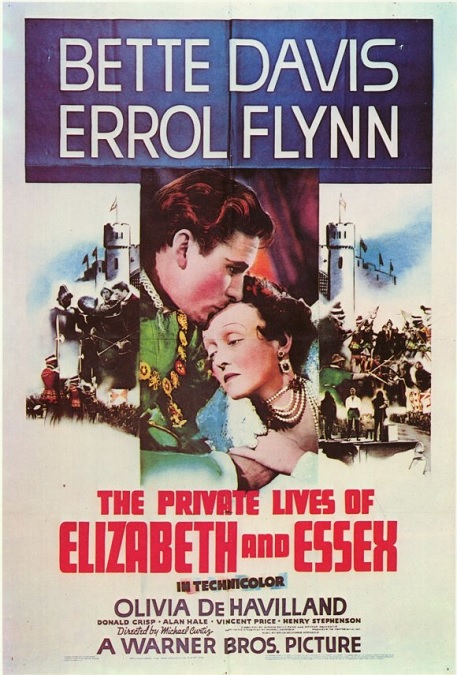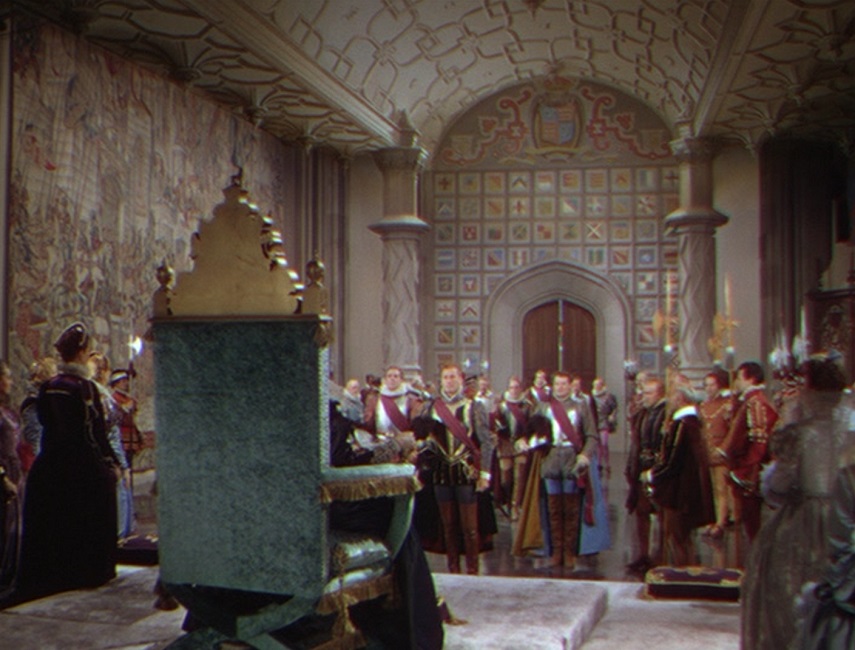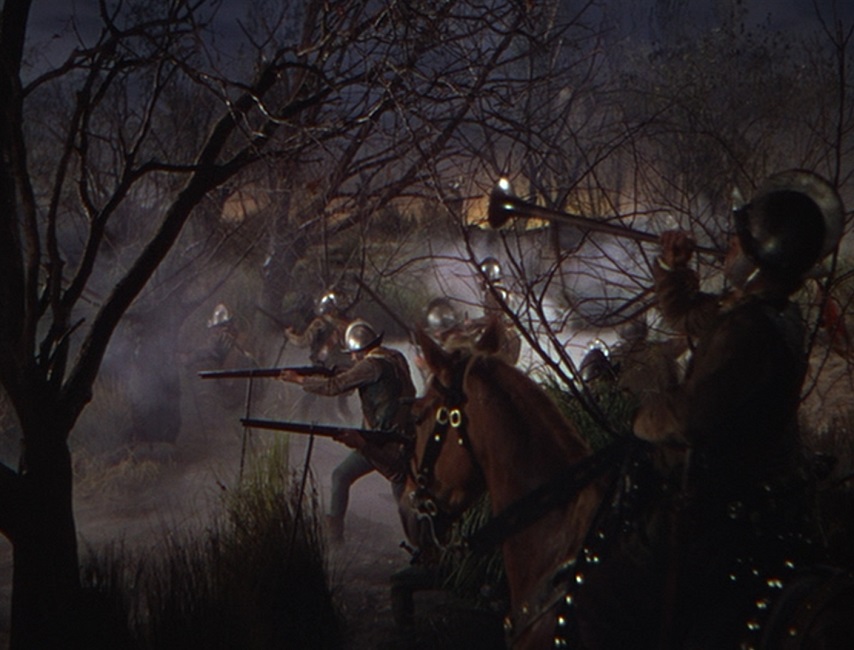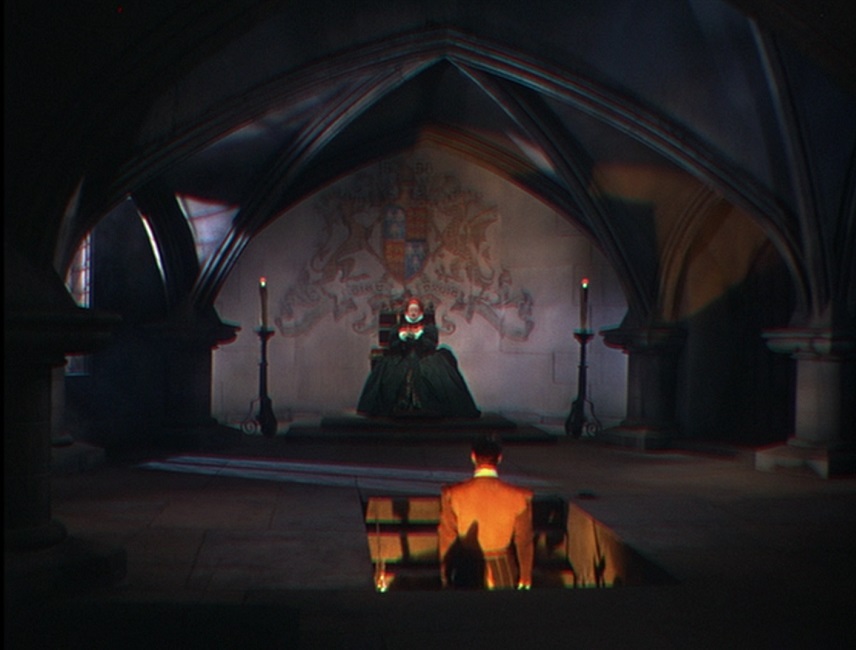




The Private Lives of Elizabeth and Essex – 1939
This movie is a little hard to critique for Special Effects. There didn’t seem to be anything special about them. There were a few matte paintings and a short battle sequence, but aside from that, there wasn’t much to catch my attention. Now, I’ll be the first to admit that I’m not educated in film history. I’m not very knowledgeable about movie magic of the 1930s and 1940s. I know that there had to be a reason why this movie was nominated for the category, but for the life of me, I don’t really know what it was.
In fact, I even did a fairly competent search on the internet, trying to find anything that might explain what special effects I was supposed to be looking for, but still, I came up empty. Then, I did a little reading about the category itself, and found that up until 1963, the concept of Sound Effects was part of the Special Effects category, at which time, Best Sound Editing became its own category. Perhaps this was nominated more for sound effects than visual effects. But again, I did my research and could find no evidence to support this either.
Either way, with my limited knowledge about the subject, all I have to go on is what I can see on the screen. What looked impressive? What looked innovative? What looked good… and what looked bad? There was a sense of grandeur about the film, that stemmed from the sets which looked gigantic, though, I’m sure they were filmed on smaller studios. The matte paintings looked perfect.
What I was not impressed with were the inside walls of the castle. In nearly every scene that took place indoors, the walls looked like painted stage flats. They tried to make them look like stone by painting bricks in the corners of the rooms, but they looked completely fake. But I can’t push this off on Byron Haskin, the Special Effects Technician. This would have fallen under the Production Design category.
As I mentioned, there was a brief battle sequence that had some gunfire, men getting shot with arrows, and a shot of Essex’s camp being torched in the distance. But while these things were passable, they were nothing to write home about. When a man would get pierced by an arrow, it was always in his back, and you could almost see the wooden board under his tunic.
And finally, there was one curious little expositional scene that took place outdoors at the Red Lion Inn. One of the documentaries on the DVD explained that this was a composite shot, with the setting sun being a separate image from the foreground. But watch the shadow of the man riding the horse. Based on where the sun was in the sky, the shadow seems to be falling in the wrong direction. Don’t get me wrong, I liked the movie. I’m just not sure why it was nominated for Best Special Effects. If someone knows, please fill me in!